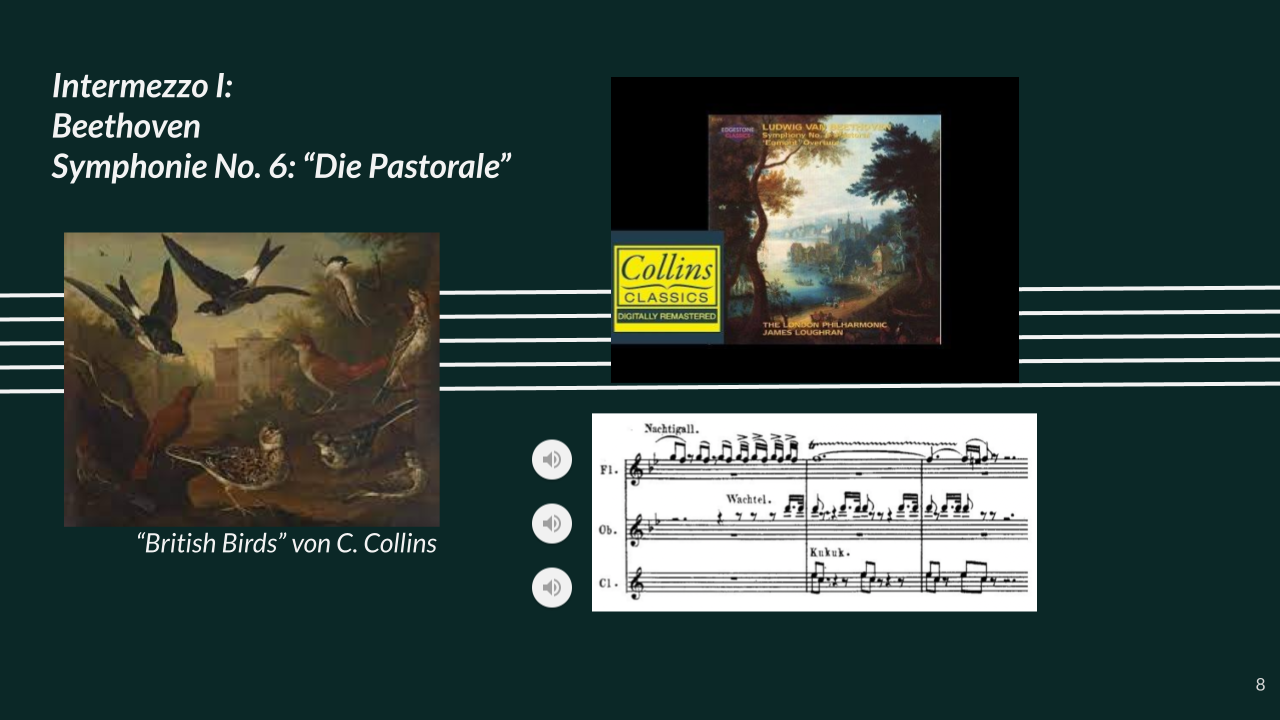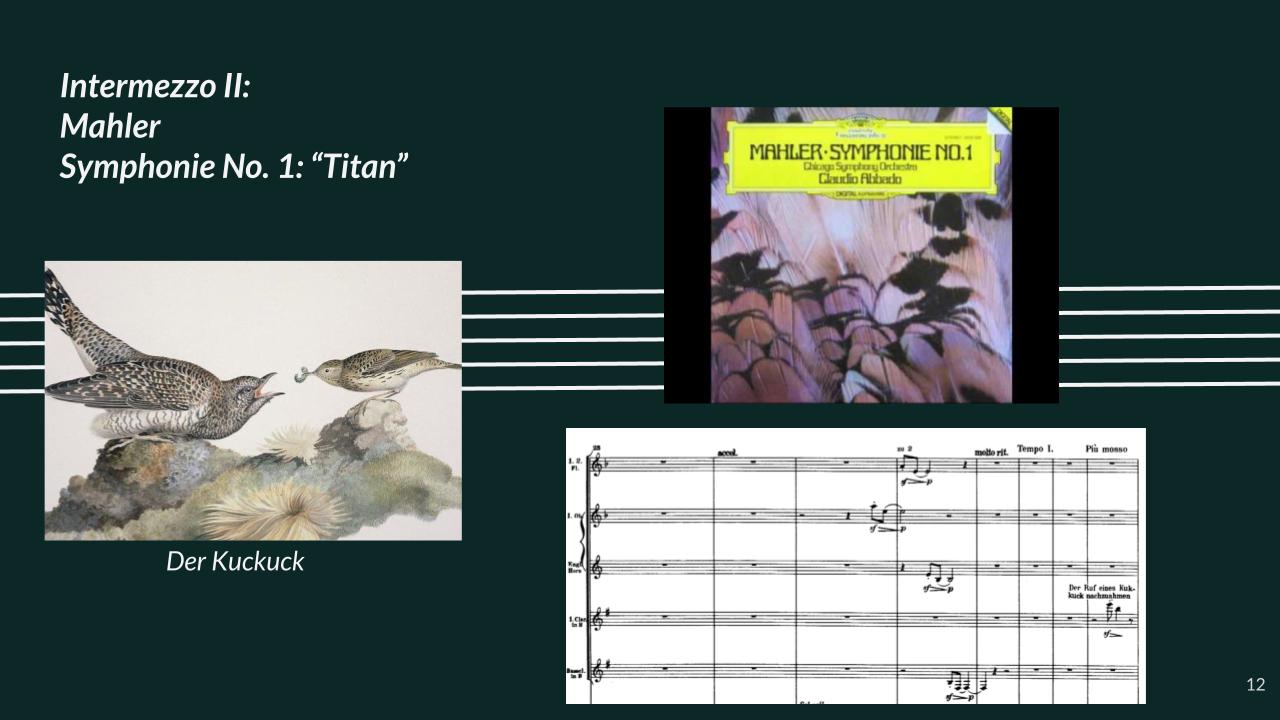[Talk] Die schnatternde Menagerie: An Introduction to Animal Communiation
Yesterday, I gave a talk in the Interdisciplinary Colloquium of the Main-Campus-Stipendiatenwerk, of which I’m a scholarship holder. It was a nice practice to give a full-length talk in German, and a nice opportunity to blend a scientific talk with some music.
In the talk, titled “Die schnatternde Menagerie: Eine ethologische und musikalische Einführung in die Tiersprache” (The Chattering Menagerie: An ethological and musical introduction to animal communication), I discussed the semantics, grammar, developement, and evolution of animal communication calls, using examples culled mainly from the bird, bat, and primate literature.

In between the scientific discussion, I showed examples of animal calls in classical music. Of course, birdsong is perhaps the most commonly found (and most accurately represented) animal vocalization in music.

Beethoven’s musical citation of the song of the nightingale, the quail, and the cuckoo is perhaps the most famous example. The cuckoo call can also be hear all over the 1st movement of Mahler’s first symphony:

Interestingly, Beethoven’s cuckoo call interval is a major third, while Mahler’s is a perfect fourth. I’ve read from one source that the interval of the cuckoo’s call widens from a minor third at the start of spring to a major fourth by the end of summer. But when trying to find a more scientific resource for this, have seen it described in reverse in an academic and bird watcher’s forum: that the call starts out as a fourth and narrows to a small third. If anyone may have some more information and can shed light on this conundrum, I’d be glad hear about it!